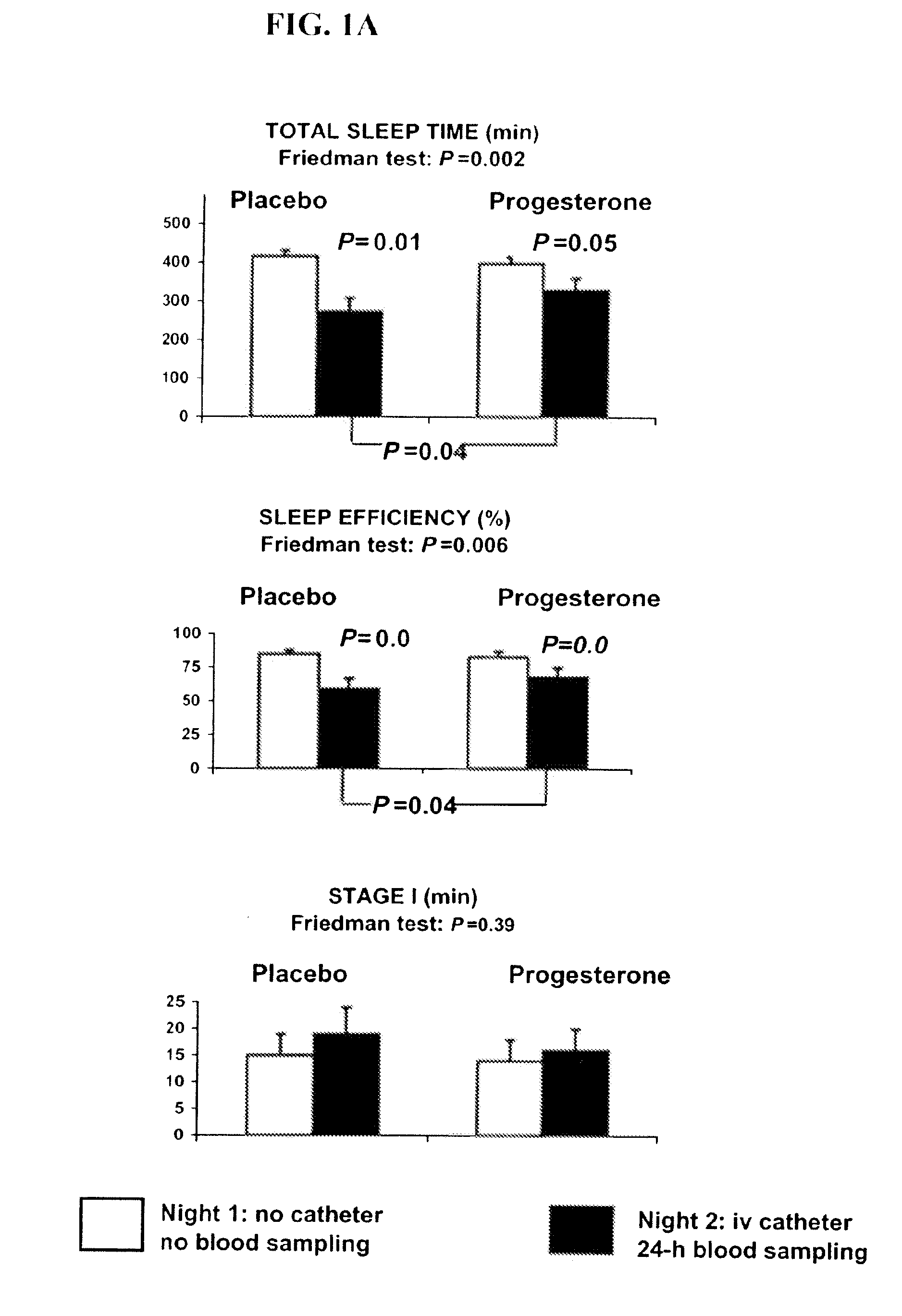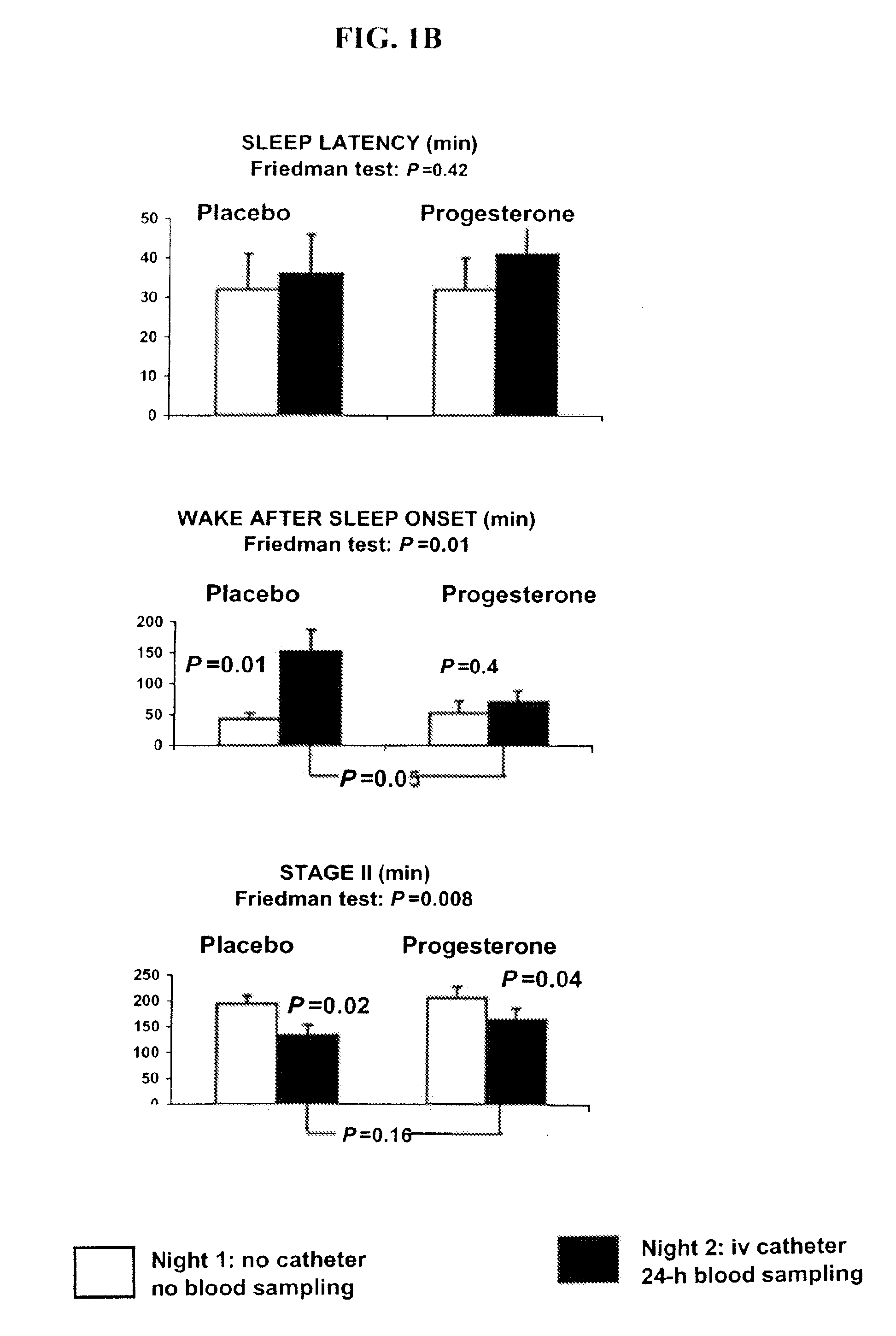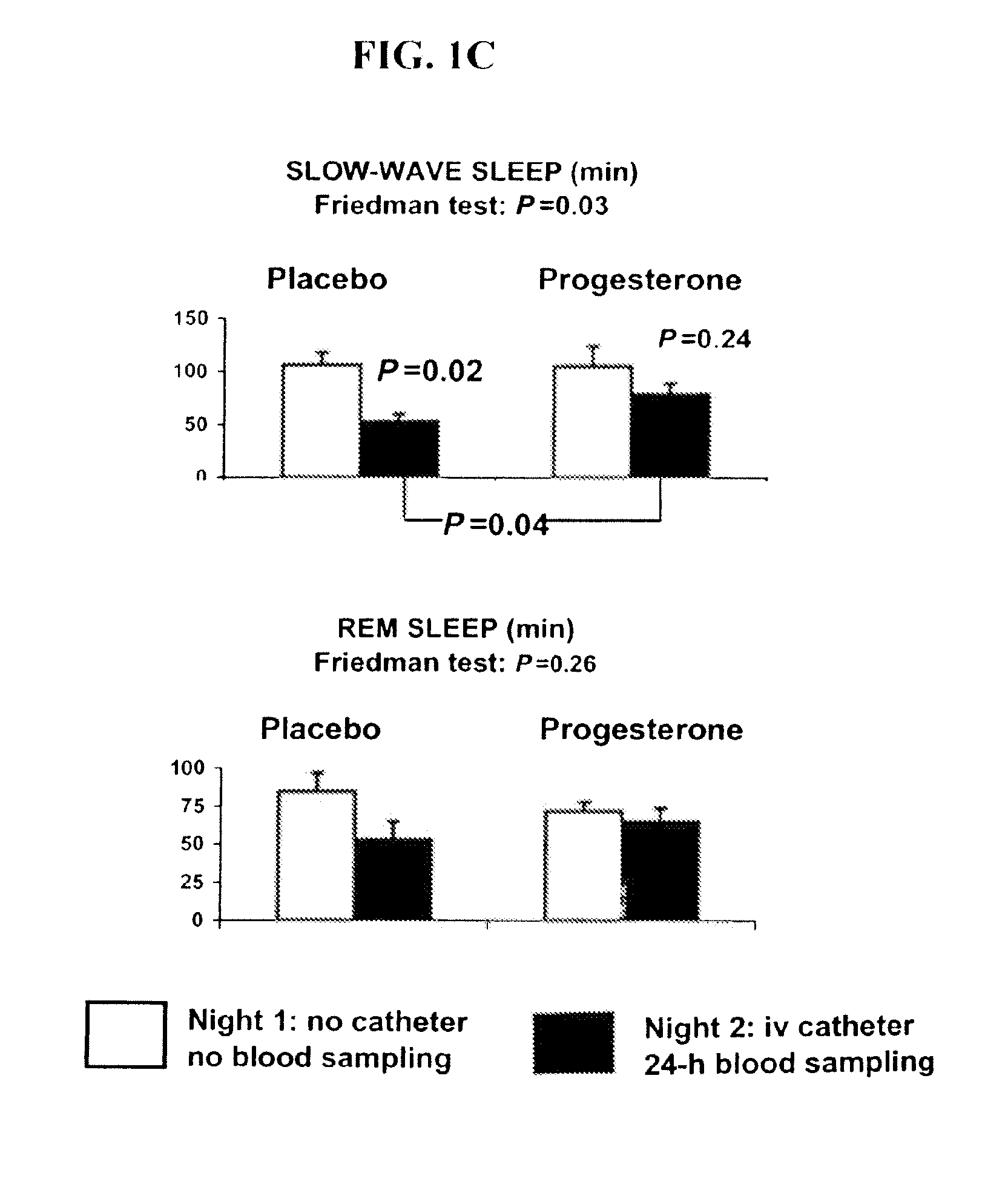Progesterone treatment for improving sleep quality
a technology of progesterone and sleep quality, applied in the direction of nervous disorders, medical preparations, pharmaceutical delivery mechanisms, etc., can solve the problems of not increasing sws or rem sleep consistently, sleep patterns that cannot be improved, sleep quality not improved, etc., to improve sleep quality, improve sws and/or rem sleep, and reduce wake time
- Summary
- Abstract
- Description
- Claims
- Application Information
AI Technical Summary
Benefits of technology
Problems solved by technology
Method used
Image
Examples
example
Prevention of Sleep Disturbances in Postmenopausal Women
Subjects:
[0061]Eight postmenopausal women, aged 48-74 yr (mean 57.4 yr), were selected after a careful clinical and biological evaluation. Investigations were performed 2-17 years (mean: 8.0 years) after natural menopause (seven subjects) or bilateral ovariectomy (one subject). Mean age at menopause was 49.4 years (range: 41-57 yr). Three subjects had never received hormone replacement therapy, and five subjects had been off such treatment for 2-6 months (mean: 4.4 months) at the time of enrollment. Body weight was in the normal range for all (mean+ / −SEM of body mass index 22.1+ / −0.8 kg / m2). In all subjects, estradiol plasma levels were <10 ng / liter. FSH plasma levels averaged 90 IU / liter (range: 66-136 IU / liter).
[0062]Smokers, shift workers, subjects who had travelled across time zones during the last 2 months, individuals with a personal history of drug abuse or with personal or family history of psychiatric, neurological, en...
PUM
 Login to View More
Login to View More Abstract
Description
Claims
Application Information
 Login to View More
Login to View More - R&D
- Intellectual Property
- Life Sciences
- Materials
- Tech Scout
- Unparalleled Data Quality
- Higher Quality Content
- 60% Fewer Hallucinations
Browse by: Latest US Patents, China's latest patents, Technical Efficacy Thesaurus, Application Domain, Technology Topic, Popular Technical Reports.
© 2025 PatSnap. All rights reserved.Legal|Privacy policy|Modern Slavery Act Transparency Statement|Sitemap|About US| Contact US: help@patsnap.com



